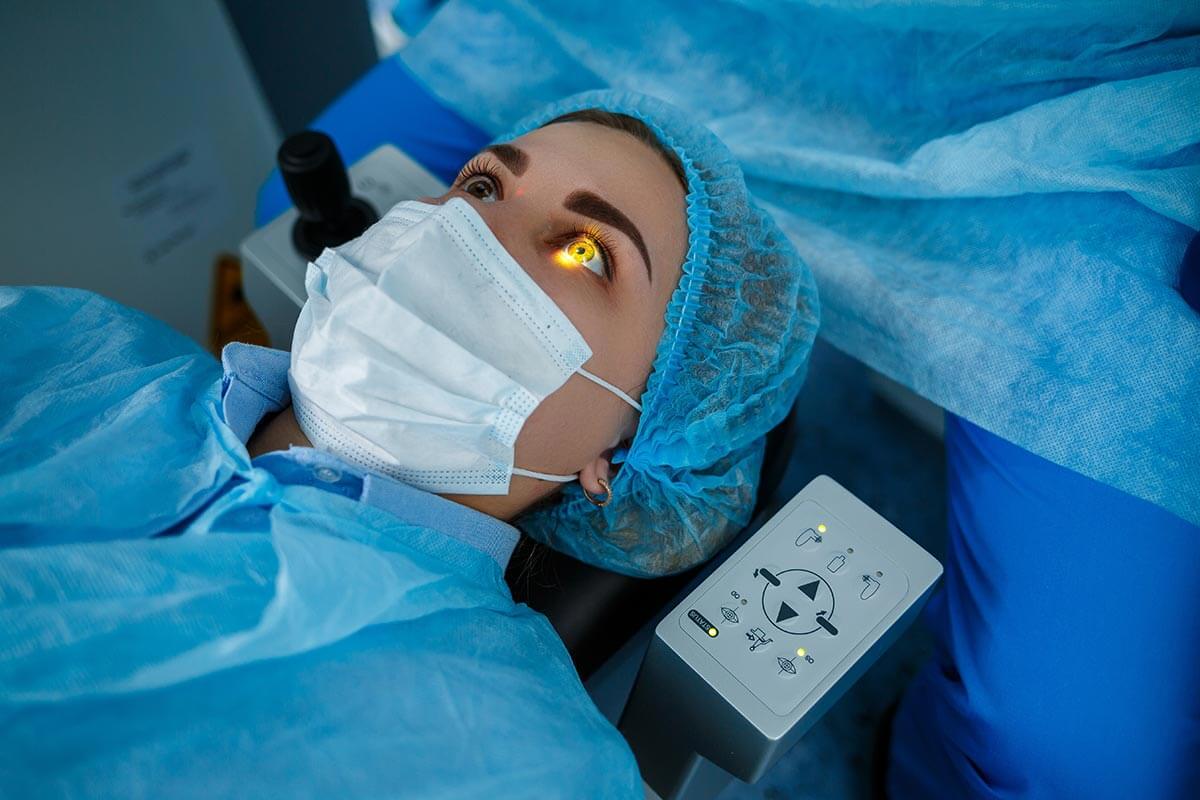
Release Your Vision with
LASIK & PRK
CHES is a premium surgery center of excellence.
LASIK, an acronym for Laser-Assisted In Situ Keratomileusis, is a refractive procedure that reshapes the cornea to correct nearsightedness, farsightedness and astigmatism. It is the most common type of refractive surgery. Using targeted laser beam energy, the LASIK procedure reshapes the cornea so that light rays are focused more precisely on the retina, producing clear, sharp vision.
request an appointment
Benefits of LASIK
One of the primary benefits of LASIK is that patients immediately experience improved vision after surgery. For many people, laser eye surgery can correct their vision sufficiently to permit them to perform all, or most, of their daily activities without eyeglasses or contact lenses. Approximately 90 percent of patients who have undergone LASIK achieve 20/20 to 20/40 vision as a result of the procedure, and in some cases better than 20/20!
LASIK has the advantage of being a short procedure that results in permanent vision improvement. Most patients who choose to undergo LASIK achieve clear vision without corrective lenses while also benefiting from minimal downtime and only mild post-operative discomfort.
Am I a Candidate for LASIK?
Are you considering LASIK vision correction? Wondering if it might be the right choice for you? Take our short quiz below to see if LASIK could be a potential option. Clear Vision San Antonio proudly serves San Antonio and the surrounding areas with advanced LASIK care. While this quiz isn't a substitute for a full LASIK consultation, it's a great first step.
Take our lasik self-test
LASIK Savings Calculator
Tired of spending money on contact lenses, glasses, and solution? Use our LASIK Savings Calculator to see how much you could save by making the switch to LASIK. Once you've completed your calculation, a LASIK coordinator from Clear Vision San Antonio will reach out to discuss how LASIK can transform your life.
get your estimateThe LASIK Procedure
LASIK is performed on an outpatient basis using only numbing eye drops to reduce any potential discomfort. The entire surgery takes less than 5 minutes to perform, although patients can expect to spend a few hours at the doctor's office. If requested, patients can receive an oral sedative prior to surgery to reduce any anxieties about the procedure.
During the LASIK procedure, the patient lies down in a reclining chair as the doctor positions the laser precisely over the eye. A speculum is used to keep the eye open while the eye is cleaned and anesthetic eye drops are administered. A corneal flap is created with either a blade or a laser. The surgeon gently lifts the surface of the cornea aside, enabling the excimer laser to reshape the curvature of the cornea.
The excimer laser delivers customized pulses of light energy based on each patient's prescription. The measurements for customization are determined prior to surgery, with the precise positioning confirmed prior to the start of the procedure. The second eye is treated immediately after the first. Following the surgery, the patient is provided with a protective shield to protect the eyes from bright lights.




Photorefractive Keratectomy (PRK)
Photorefractive keratectomy, or PRK, is a laser vision correction procedure that reshapes the cornea to correct mild to moderate conditions of myopia (nearsightedness), hyperopia (farsightedness), and astigmatism. It is the second most common type of laser eye surgery after LASIK. While during LASIK a flap is created to access the cornea, during PRK the entire epithelial layer of the cornea is removed and later allowed to grow back. During both processes, the cornea is reshaped to provide vision correction.
Before the PRK procedure begins, the eyes are numbed with anesthetic eye drops. The surgeon then uses an excimer laser, with targeted laser energy, to reshape the cornea. The surgeon has complete control over the laser throughout the procedure, for a highly precise and customized result, designed to give each patient the best vision possible.
The entire procedure takes only a few minutes to perform. Because of the potential for blurred vision for a time after PRK, the surgery is often performed on only one eye at a time, with the surgeon waiting to schedule the second eye until the vision in the first has adequately cleared.
After the procedure, the eyes are bandaged with a soft contact lens to protect the cornea. New cells will grow back over the next few days to replace the cells that were removed. The contact lens will be removed by the surgeon in a follow-up examination.
After the PRK procedure is completed, patients are instructed to rest before returning home. They may required to wear eyeglasses after the procedure until their vision has stabilized. The surgeon prescribes eye drops to prevent infection and keep the eyes moistened.
After the procedure, the eyes are bandaged with a soft contact lens to protect the cornea. New cells will grow back over the next few days to replace the cells that were removed. The contact lens will be removed by the surgeon in a follow-up examination.
The results of PRK are considered comparable to those of LASIK. Neither LASIK nor PRK correct presbyopia, a natural change in the eyes that affects people over the age of 40. Patients who require glasses for reading will continue to need them after surgery. It is important for patients to maintain realistic expectations of the results of any laser surgery if they are to be satisfied with the results.
Are you over 40 and require glasses for reading?
CHES EYE CENTERS has the expertise necessary to determine if you are a candidate for Monovision LASIK/PRK or Clear Lens Exchange. When you visit us, please ask your surgeon for more information regarding these procedures and if you qualify for them.



